Add these dynamic movements to your warm-up routine to prevent injuries, increase your performance and improve your training.
Ok, it's time warmed up. It may not be the most exciting part of your workout, but it's still an important part of your workout routine. Because a dynamic warm-up with active stretching prepares your muscles, joints and even your brain for the work ahead. Active stretching is also an opportunity to check in with your body and how you feel, noticing if one side of your body is a little tighter than the other or if that nagging calf injury is popping up again today.
Not sure where to start with active stretching? Here's more information on the benefits of warming up before a workout, plus a guide to the best active stretching exercises to add to your pre-workout routine.
The Benefits of Active Stretching

Initial, a little update on the distinction among dynamic and uninvolved extending. In dynamic (or dynamic) extending, you'll increment adaptability through development, as opposed to by basically standing firm on a foothold as you would during detached extending.
For instance, a detached stretch may be twisting around to contact your toes, while a functioning stretch would do an inchworm, where you start in a standing position, twist around and walk your hands out to a high board, and walk your hands back in to get back to standing. Both objective the hamstrings, yet in entirely unexpected ways.
Concerning the advantages of dynamic extending, the greatest one is that this sort of development will prepare your muscles for the work ahead. Dynamic extending warms and set up the muscles for development, says Jill Goodtree, a NASM-ensured fitness coach and gathering health specialist and RRCA-confirmed run mentor. Adding dynamic extending to your exercise assists your body with changing from being stationary to trying sincerely and moving in all planes of movement.
Thusly, dynamic extending can likewise assist with forestalling injury. This is how it's done: A dynamic warm-up with dynamic stretches increments muscle temperature and blood stream, which works on your presentation during exercise and lessens the gamble of injury to muscles and ligaments.
That is on the grounds that warm, free muscles are less inclined to tear or tear during an exercise, and since your focal sensory system is enacted, you'll likewise be more ready to respond in the event of an off-kilter wind, stagger, or close fall (think: you'll be more ready to discover your equilibrium during a solitary leg deadlift, as opposed to falling and possibly harming yourself.
Best Tips for Active Stretching
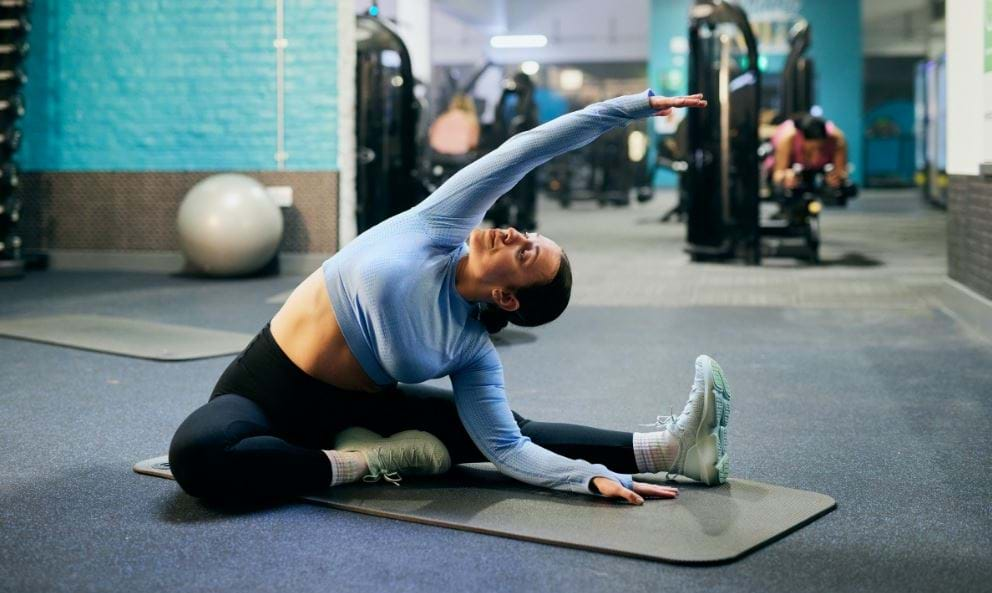
While practically any sort of dynamic extending is really smart, you can augment your time spent heating up by being purposeful about the stretches you use, says Goodtree.
"Dynamic extending is best when it connects with the work that will be acted in the exercise," she makes sense of. "For instance, in the event that your exercise includes deadlifts, bodyweight great mornings are an extraordinary powerful stretch to rehearse your hip pivot prior to adding weight." In this way, consider the exercise you have in front of you, and pick your dynamic stretches likewise. For leg day, your dynamic stretches could incorporate bodyweight squats, great mornings, and horizontal jumps, while a HIIT exercise could call for inchworms done at a high speed.
The 7 Best Active Stretches
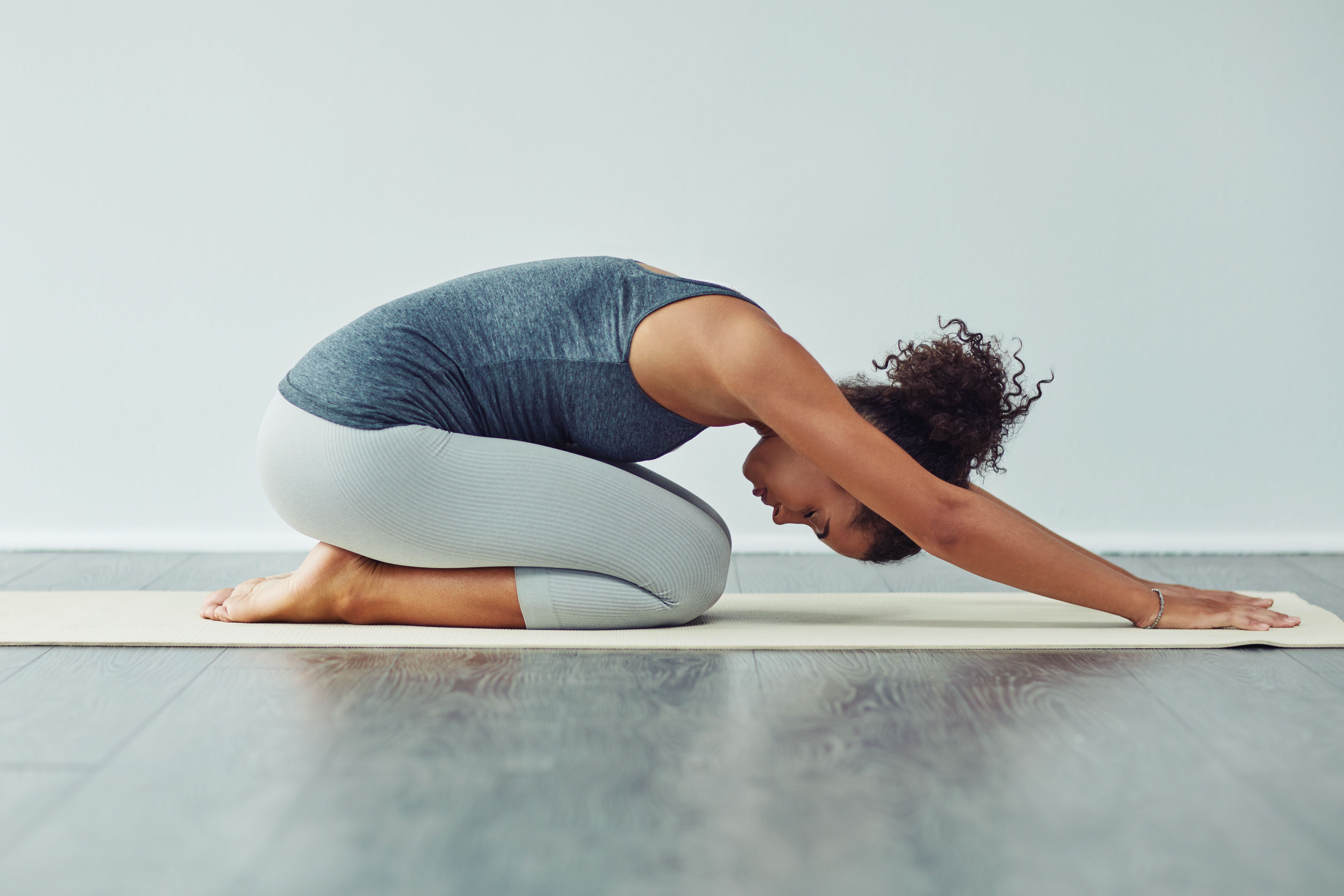
The accompanying dynamic stretches will prepare and prime your muscles to move without a hitch, effectively, and securely, says Goodtree. No hardware is important. Take as much time as is needed slipping into every development. Keep in mind, these developments are to prepare you for your exercise they're not the genuine exercise themselves, and you don't have to go as hard as possible with these activities.
The most effective method to add dynamic stretches to your gym routine daily schedule: Take a stab at doing every development for 30 to 60 seconds (per side, if fitting) to make your own full-body warm-up. Or on the other hand, pick a couple of these dynamic stretches that focus on the muscle bunch you're going to lock in. The manner in which you utilize these activities will change in view of your objectives and your forthcoming exercise, so make sure to change them as required.
Here, Goodtree demonstrates seven active stretching moves. Add these to your routine for more effective workouts, fewer injuries, and a better mind-body connection.
1: Squat with T-Spine Rotation
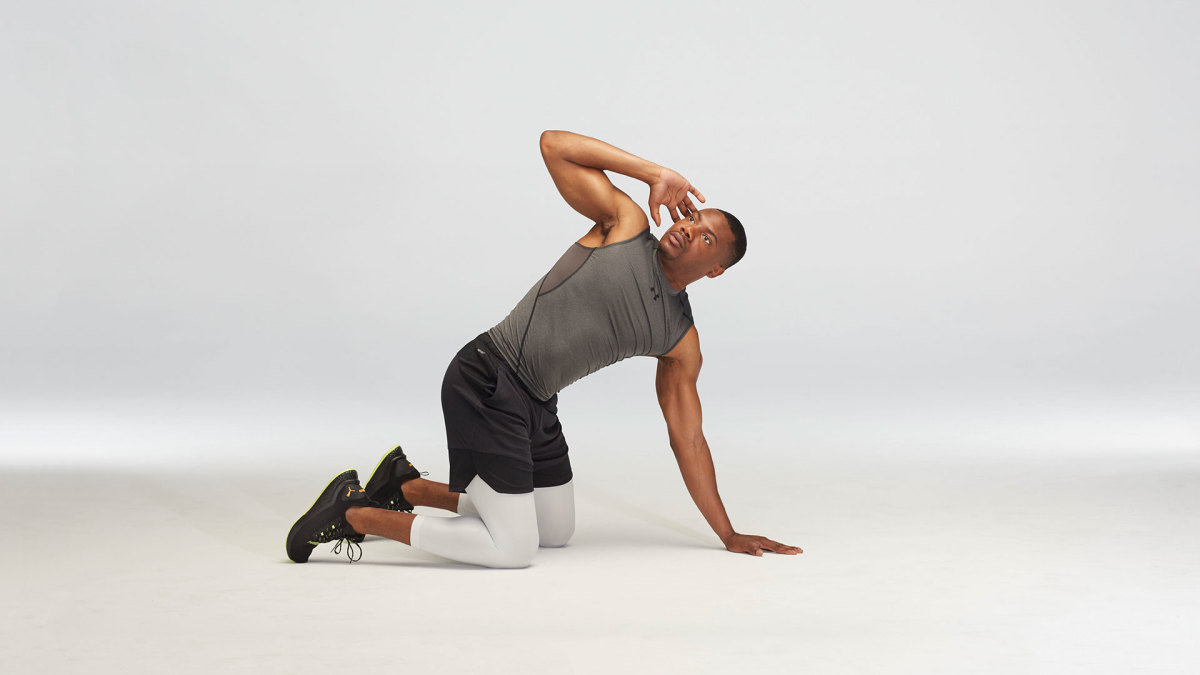
Sitting and standing firm on this low squat foothold opens up your hips, and including a turn prepares your thoracic spine (otherwise known as the piece of your spine that is in the upper and center piece of your back).
2: Alternating Runner's Lunge with Rotation

This dynamic stretch is otherwise called the "world's most noteworthy stretch," and for good explanation: It draws in each significant muscle bunch in your body (particularly your lower body — glutes, hamstrings, hips, and quads), and the bend assists your thoracic spine with getting ready also.
3: Clamshells with Hip Lift
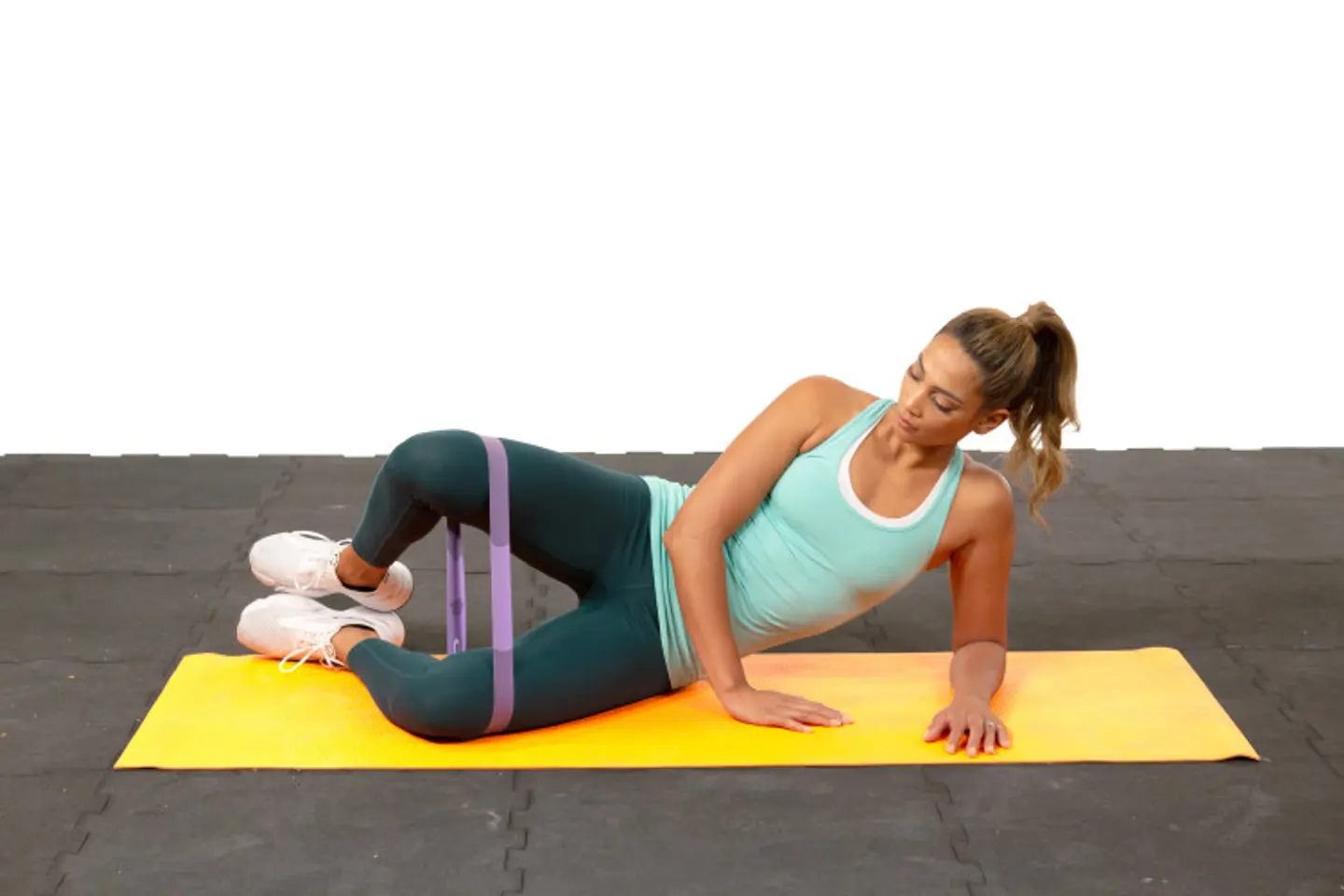
Clamshells expect you to draw in both your glute maximus the greatest muscle bunch in your butt and your glute medius, which sits under the glute maximus and is harder to actuate. The glute medius is key for strength and power; additionally, including the hip lift powers your center to assist with balancing out your body also.
4: Plank to Downward Dog

All alone, a board initiates your center, glutes, and shoulders. At the point when you change to descending canine, you'll get the special reward of extending your hamstrings and back.
5: Scapular Push-Ups
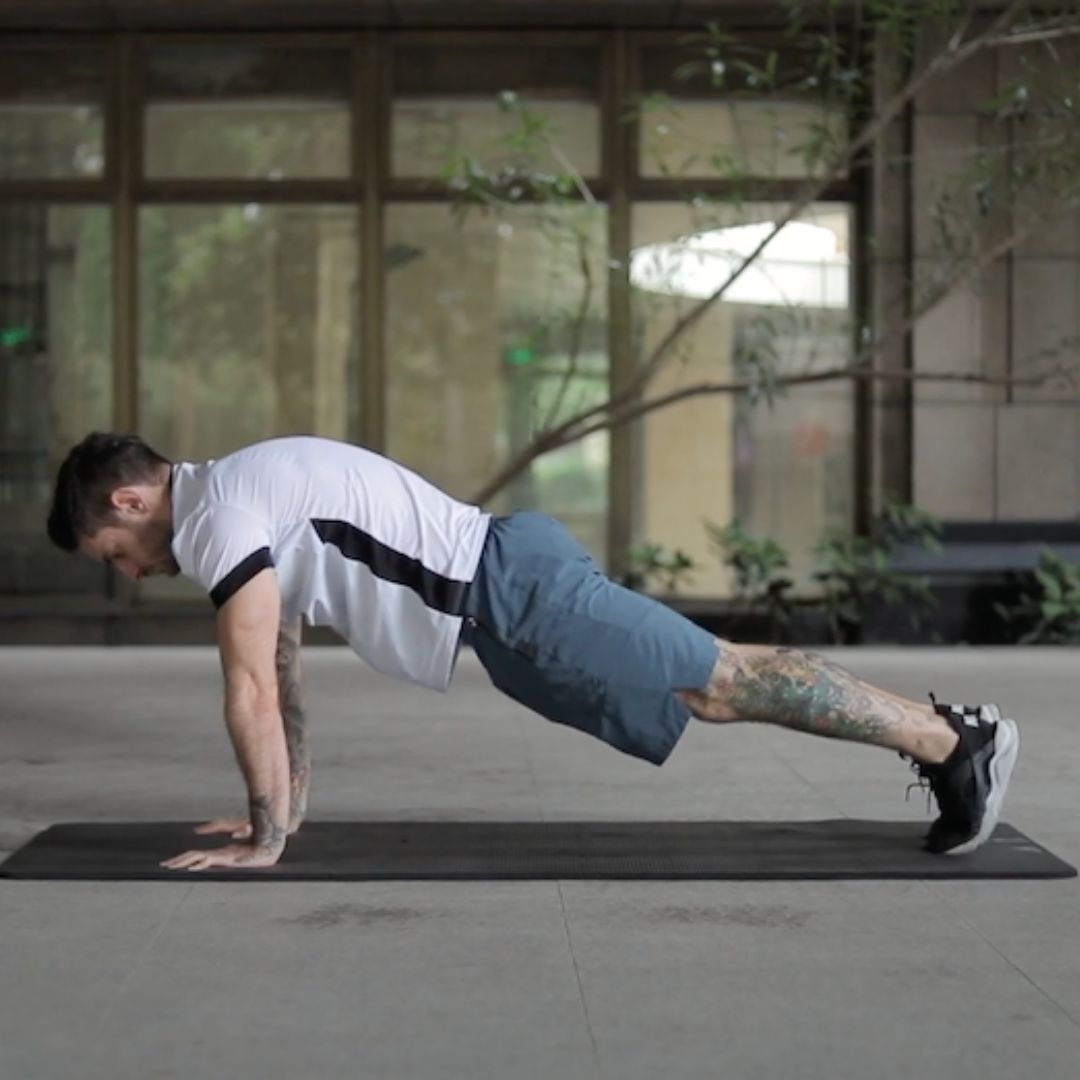
Scapular push-ups may not seem as though much, however there's a lot of work happening inside the little scope of movement. This dynamic stretch further develops shoulder security by reinforcing the serratus front muscle (which is on your ribcage and is liable for quite a bit of your shoulder development.
6: Half-Kneeling Hamstring Stretch

Extending your hamstring from this half-bowing position requires center commitment to assist you with keeping a level back and remain upstanding. For significantly more dynamic extending, change from this half-stooping stretch to a profound sprinter's thrust on a similar front leg.
7: Plank Walkouts

Besides the fact that this dynamic extending moves (otherwise called an inchworm) release your hamstrings, however it likewise gets your pulse up by provoking you to move rapidly from an upstanding to a board position. It's great for a dynamic warm-up before a cardio exercise.